15+ True Life Stories With an Unexpected Finale That Deserve a Movie

You’re traveling through deep space circling stars and entire galaxies. Whoa, looks like this multicolored nebula will soon collapse under its own weight and explode like a supernova. Now let’s carefully circle this black hole.
Try not to get caught in its gravitational field, or it’ll swallow you like a space monster. Hmmm, wait. What is that strange structure right there? It’s a glowing wall!
And if you look closely, each glowing dot is an entire galaxy. That wall has about 100,000 of these galaxies. The Milky Way has 100 billion stars. So this wall holds a quadrillion (that’s 10 followed by 15 zeros) of stars like our Sun.
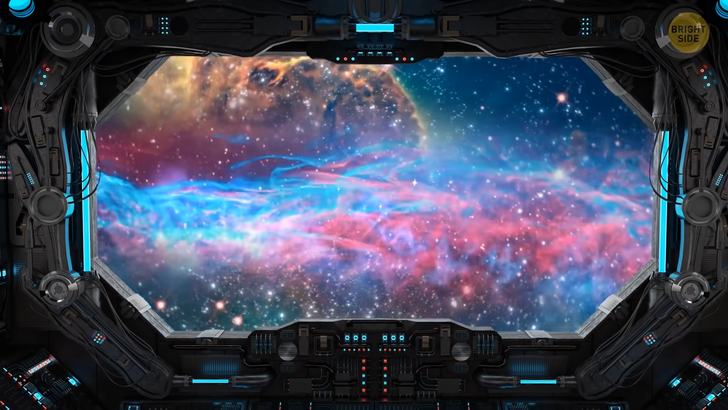
This giant structure is called the South Pole Wall. It’s located about 500 million light-years from Earth. By comparison, the closest star to our home is Proxima Centauri, and it’s about 4.2 light-years away. Rockets can cover that distance in about 73,000 years. So the journey to the South Pole Wall may take longer than our solar system exists. And this wall is simply gigantic, even on a cosmic scale. It’s about 1.37 billion light-years long.
To give you an idea of how large that is, the Milky Way is only 100,000 light-years wide. But you can’t see this wall even with the most powerful telescope. The problem is that the Milky Way itself obstructs your view. It’s so bright that it’s hiding this wall. It’s like trying to look at the starry sky in a metropolis. The light pollution won’t let you do that.
Scientists have been able to detect this galactic wall by measuring redshift. We know that all objects in the universe are moving. They spread out from each other as a result of the Big Bang, which happened billions of years ago. And when galaxies move, their light waves change slightly. By measuring this change, we can understand what the object is, and how it moves. And this wall isn’t even the largest in our universe. This is the Hercules-Corona Borealis Great Wall.
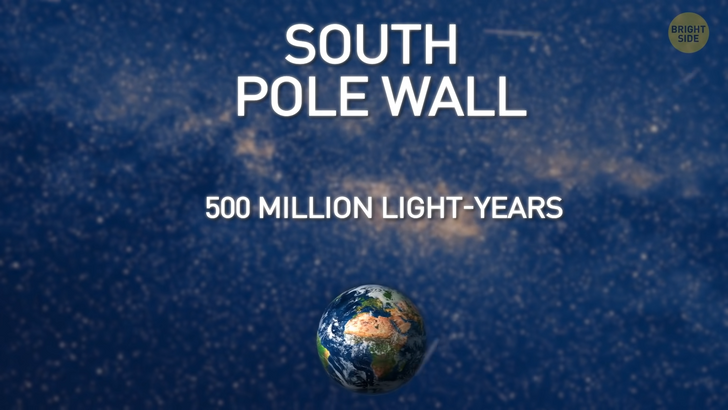
It’s a giant flat superstructure about 10 billion light-years wide. That’s around 10% of the entire observable universe. And it’s also a wall. That is a cluster of galaxies. We were able to detect this giant structure by gamma-ray bursts. It’s the brightest electromagnetic event in the universe. You could even see it in the far reaches of our universe.
Such bursts are a very rare event. In the Milky Way, for example, it happens once every few million years. If we notice many such bursts in a short time from the same place, it means that there are many objects like the Milky Way in that place. So, there are a lot of galaxies out there. Another unusual giant structure in the universe is the Huge Large Quasar Group. It’s about 4 billion light-years across.
So it takes a photon of light almost as long as our planet has existed just to get from one side of the structure to the other. And if you put the Huge Large Quasar Group on the scale, it would be 6.1 billion times heavier than our Sun. Scientists have found that there are at least 73 quasars in that structure. These are some of the most unusual objects in the universe. They are the active cores of galaxies. At the center of a quasar is a supermassive black hole. This giant eats up the matter around it.
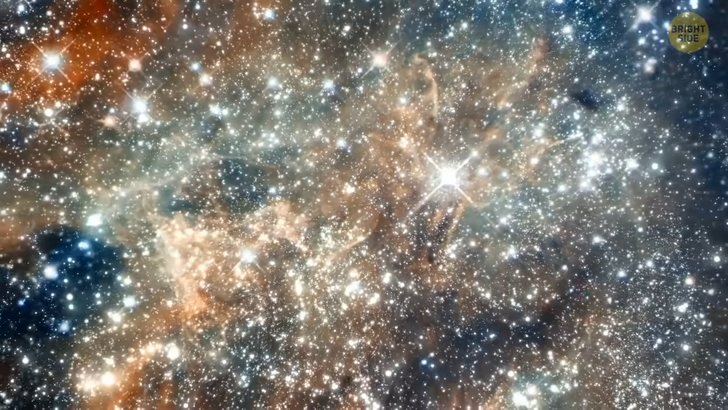
A wild force of gravity twists the matter around the black hole, forming a disk. And this disk is the source of the strongest radiation out there. By comparison, the radiation from a single quasar is tens or hundreds of times stronger than that of all the stars in our galaxy put together. Because of such strong radiation, we can detect quasars even at very long distances.
That’s why they’re also called beacons of the universe. Scientists use quasars to study the universe and the movement within it. One of the most distant quasars from us [ULAS J1342+0928] is about 13.1 billion light-years away. This makes it one of the oldest objects in the universe. It appeared about 690 million years after the Big Bang, and it’s almost 3 times older than our solar system.
It’s still glowing with extreme brightness, about 4 and 14 zeroes times brighter than the Sun. Scientists explain that at the center of the giant is a supermassive black hole, 800 million times heavier than the Sun. All these giant structures are just building blocks of our universe. Look, this is our Solar system. Now, zoom out a little. This is where our home star is in the Milky Way galaxy. Zoom out, again. Here’s a local group of galaxies.
All the bright spots here are galaxies. Here’s Andromeda. And here’s the Triangulum galaxy. Plus, a few dozen other, slightly smaller galaxies. They’re all gravitationally connected. The size of this structure is about 10 million light-years. That’s 100 times the width of our galaxy. Zoom out, please. This one is the Virgo supercluster. It’s 20 times larger than the local group. There are about 30,000 different galaxies. And the mass of the whole thing is about 1 and 15 zeroes solar masses.
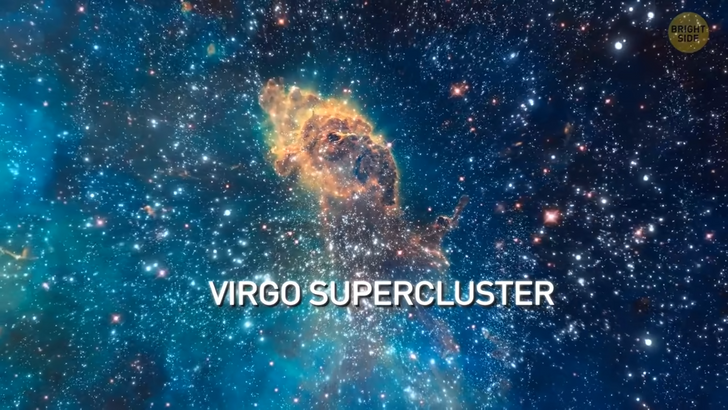
Zoom out again! Laniakea. This structure is almost 3 times larger. It includes the Virgo supercluster and other smaller clusters. And there are about 100,000 galaxies here. It’s not over yet. Zoom out one more time. Here’s the Pisces-Cetus supercluster complex.
This giant galactic structure contains about 60 clusters of galaxies. So there are more galaxies in it than grains of sand in the desert. You know what to do — zoom out! Phew, this is the observable universe. There are over 500 billion galaxies. And the stars... Well, there are about 1 billion trillion stars.
The observable universe has its own structure. Clusters of galaxies form chains and walls, as you’ve seen before. But these strands are separated by huge regions of absolute emptiness. These areas are called voids. In these places, there is no matter at all. There are fewer molecules in the voids than in an empty room. One of these voids has a very mystical reputation.
It’s the Eridanus [ih-ri-da-nus] Supervoid or the Cold Spot. It appeared here only 380,000 years after the Big Bang. It’s almost 1 billion light-years wide and could hold hundreds or thousands of galaxies with trillions of stars. Some scientists believe that this Cold Spot may have been the result of the largest collision ever. A collision of universes. There’s a theory that our universe is some kind of bubble. A huge sphere that contains all these walls and chains of galaxies.
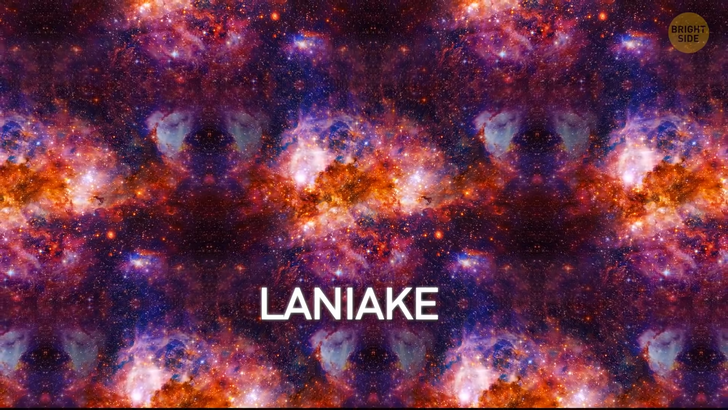
Now imagine that there’s an infinite number of these bubbles. They could be parallel worlds or different universes. Many years ago, one bubble came close to the bubble of our universe. Their walls touched, and the two universes connected for a while. It’s like two drops of water coming together. But that universe kept moving.
The area where the bubbles joined became thinner and thinner until that connection broke, and the two bubbles detached from each other. At this point, the second universe ripped some of the material out of our bubble. All those galaxies that used to fill the Eridanus Supervoid ended up in a parallel universe. Scientists supposed we might travel through other bubbles. Flying to the supposed wall of our universe would take forever. And then it would take even longer to fly through interuniversal space.
So we have to use portals or wormholes. Here’s how it works. Imagine a piece of paper with point A on one side and point B on the other. Instead of moving all the way across the sheet of paper, we just fold the sheet, so that point A is right above point B. All that’s left to do is make a small hole, and the journey takes only moments.
Some scientists believe that such shortcuts through universes lie inside black holes. But how do you survive falling into a black hole? You just have to pick one that’s big enough. It’s all about gravity. Imagine you’re falling into a black hole right now. The closer you get to it, the stronger effect it has on you. It intensifies with every inch.
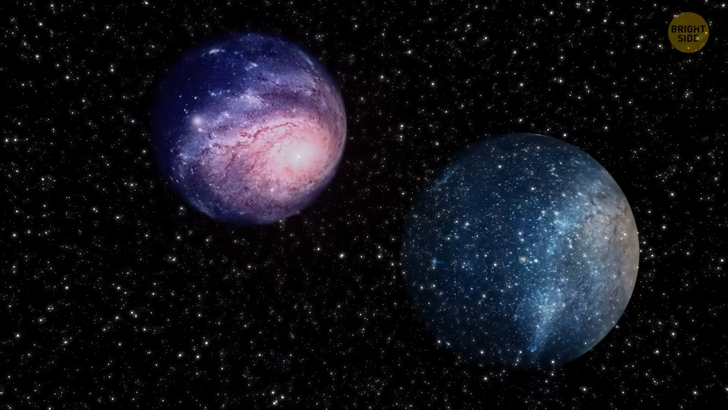
At one point, the gravitational force that affects your head is much stronger than the one that affects your feet. Then you turn into spaghetti. Yum! But if you choose a supermassive black hole like the ones at the centers of galaxies, the gravitational force in them increases gradually.
They can be millions of times heavier than the Sun and much bigger. But the gravitational force on your head and your feet will be almost equal, and you will still feel comfortable. Who knows, maybe if you manage to survive a fall into such a massive black hole, you will find yourself in a completely different universe, where different laws of physics apply. But so far, this is just a theory.











